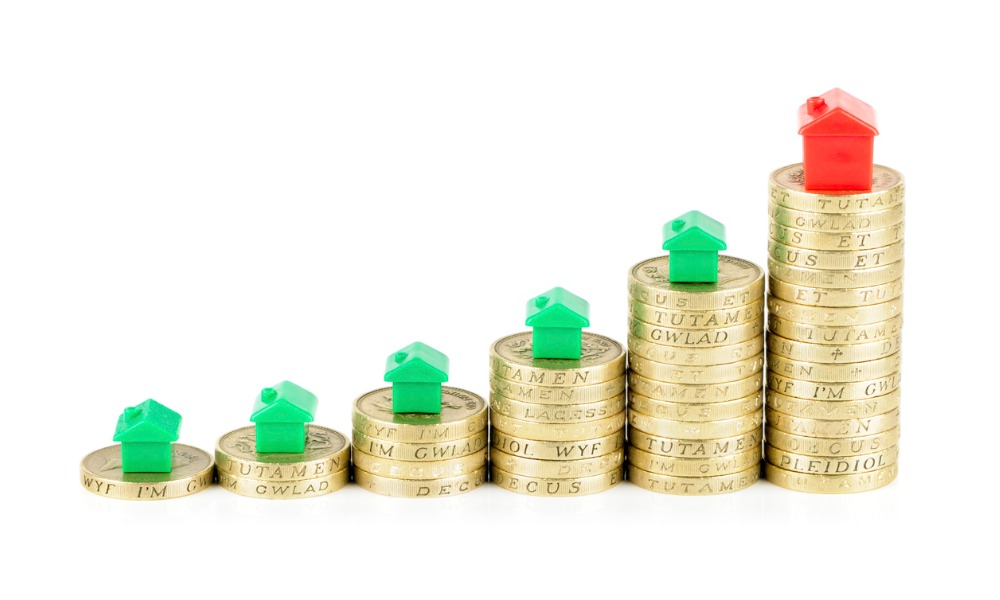ONS delivers the numbers

UK house prices saw an annual fall of 1.4% in December 2023, an improvement from the previous month’s 2.3% drop, figures released by the Office for National Statistics on Wednesday have shown.
The average house price, at £285,000 in December, was £4,000 lower compared with the average house price during the same period a year earlier.
Breaking down the figures by nation, England experienced a 2.1% reduction in average house prices, falling to £302,000. Wales also saw a decrease, with average prices dropping by 2.5% to £214,000.
In contrast, Scotland reported a 3.3% increase in average house prices, reaching £190,000, while in Northern Ireland, the final quarter of 2023 witnessed a 1.4% increase in average house prices, rising to £178,000.
Regionally within England, the North West experienced the highest annual growth rate at 1.2% in the 12 months to December 2023. Meanwhile, London faced the most significant decline, with average prices falling by 4.8%, according to the latest UK House Price Index.
Average UK house prices decreased by 1.4% in the 12 months to December 2023 (provisional estimate)🏡
— Office for National Statistics (ONS) (@ONS) February 14, 2024
This is up from a decrease of 2.3% (revised estimate) in the 12 months to November 2023.
➡️ https://t.co/JRRxZTMSiA pic.twitter.com/mDAxAOIffT
“The further dip in UK house prices prolongs the downbeat trend in market confidence; but for how long?” commented Alan Davison, director of customer sales at Together. “Indeed, despite affordability concerns and with inflation holding steady today, we’re still seeing homeownership ambition remain strong.
“More than half, or 52%, of millennial first-time buyers admitted they would still invest at least £25,000 more into property if given the chance. And, as mortgage rates start to settle and with economists anticipating a cut in the Bank of England’s interest rate as early as May, we may see demand from hopeful buyers start to improve.”
Tony Hall, head of business development at Saffron for Intermediaries, said the latest figures make for rosy reading on Valentine’s Day, with house prices holding firm despite wider economic pressure.
“Confidence in the market, which helps to solidify pricing, is being boosted by lenders competing fiercely on product rates – Moneyfacts recorded the biggest drop in two-year fixed rates since 2022 on Monday,” Hall noted. “However, the picture is more complex than this, with some rates being priced upward in line with swap rates over the last fortnight.”
Rents continue to increase
In the UK lettings market, private rental prices paid by tenants have seen a 6.2% increase in the 12 months leading up to January 2024, maintaining its growth rate for the second month in a row.
A breakdown by country, as shown in the latest Index of Private Housing Rental Prices, revealed that England experienced a 6.1% rise in annual private rental prices, while Wales saw a 7% increase. Scotland’s prices also went up by 6.8% during the same period.
Focusing on England, London recorded the highest annual growth in private rental prices at 6.9%, during the year to January 2024. The North East witnessed the smallest increase, with private rental prices rising by 4.7%.
Anna Clare Harper, chief executive at GreenResi, said the statistics still underestimate the reality faced by renters, noting that for the one in four renters who move each year, rental price increases are often twice as high on starting a new tenancy.
“The real problem is not rent price increases but affordability,” she pointed out. “The government’s own metric for this is that to be affordable, rents must be below 30% of household income.
“Worse still, affordability is just one of the problems facing Generation Rent. There are not enough homes – rental supply is down 28% in the past 18 months. And the quality of rental homes is inadequate: 23% of private rental sector homes fail to meet the Decent Homes Standard.
“The problems of pricing, volume and quality of supply facing renters across the UK require professional investors to step in to solve them, since traditional sideline private landlords with fewer than five properties in their personal names (who made up 82% of the market at the point of the last English Private Landlord Survey) exit in droves.”
Any thoughts on this latest ONS release of house and private housing rental prices data? Tell us by leaving a comment in the discussion box at the bottom of the page.



